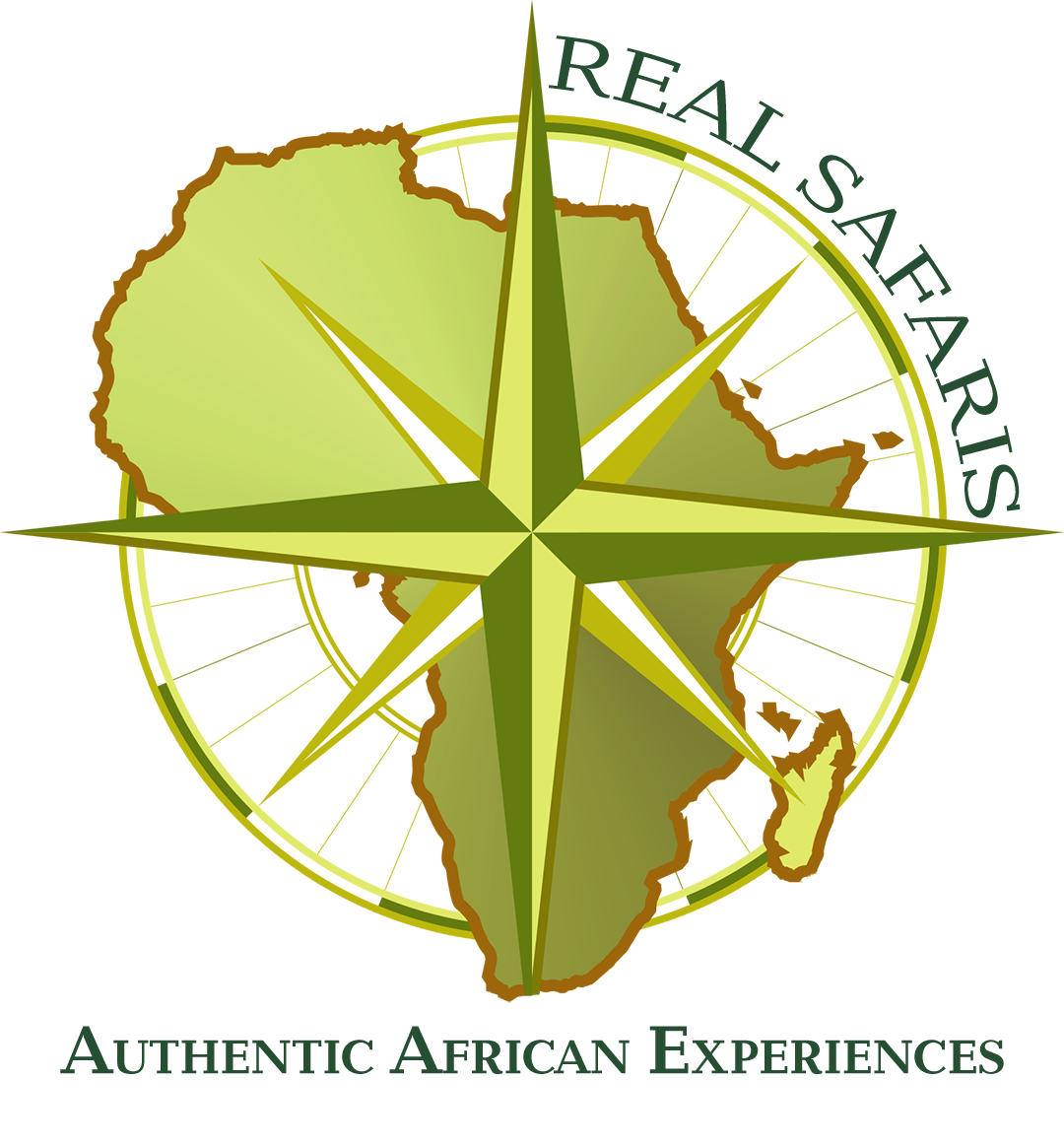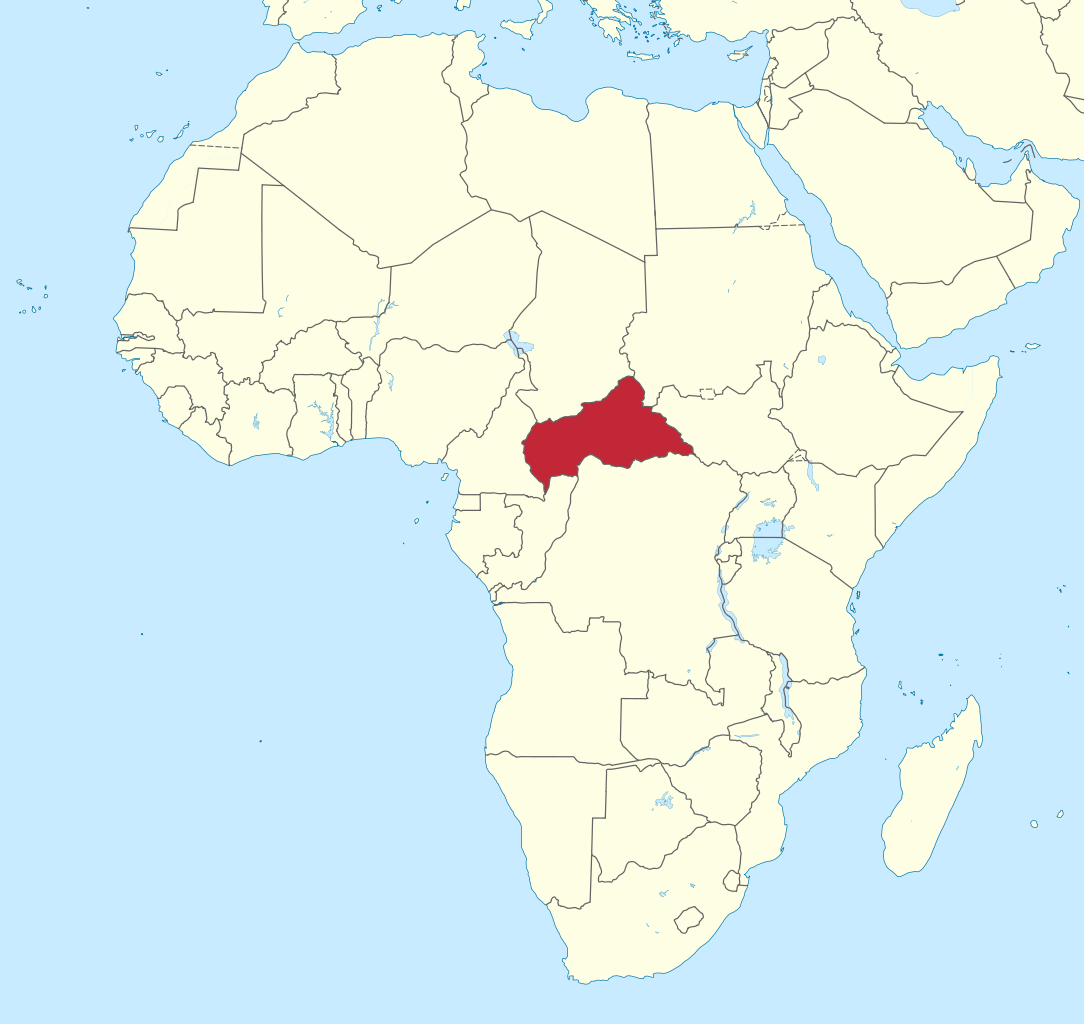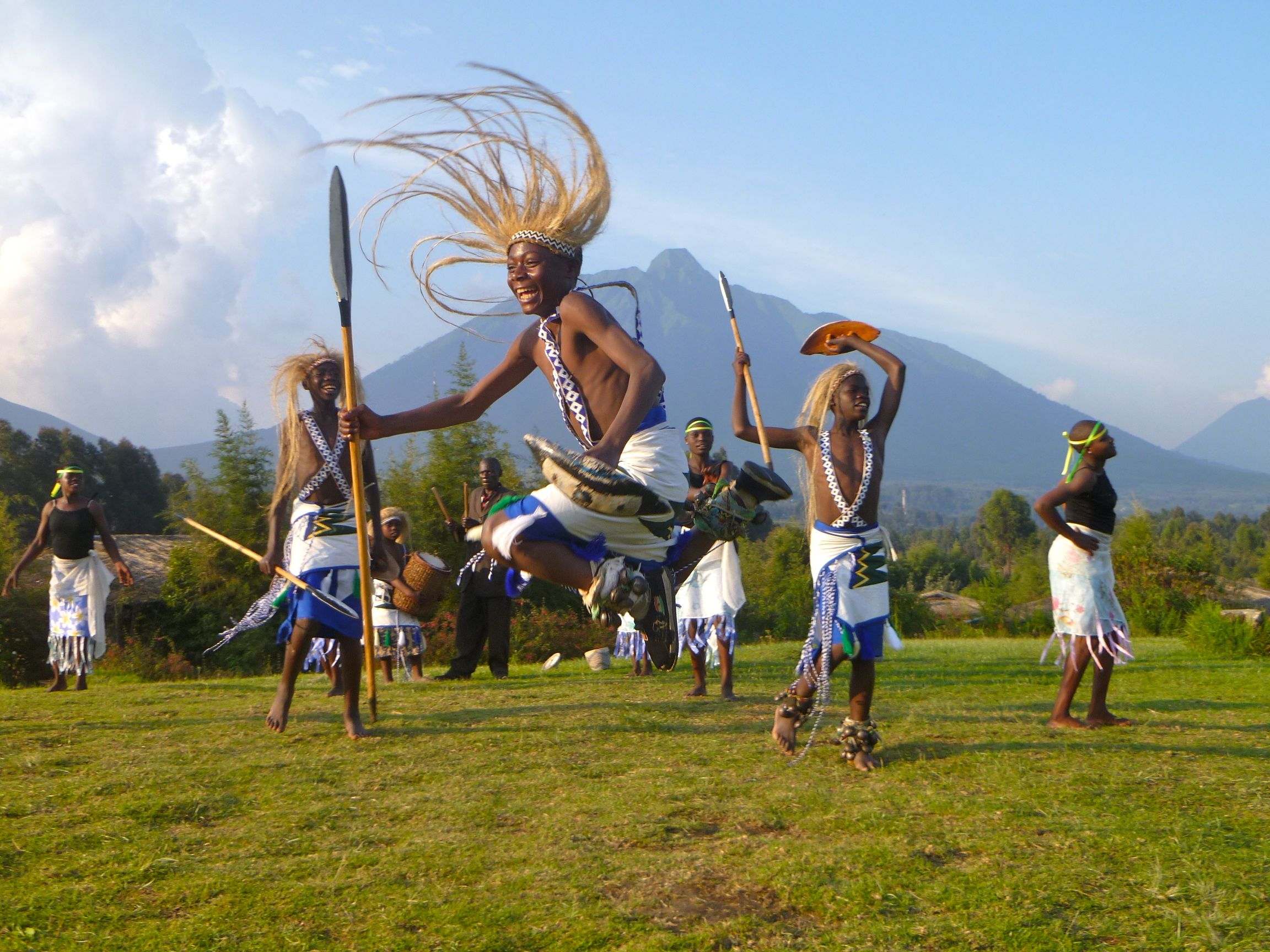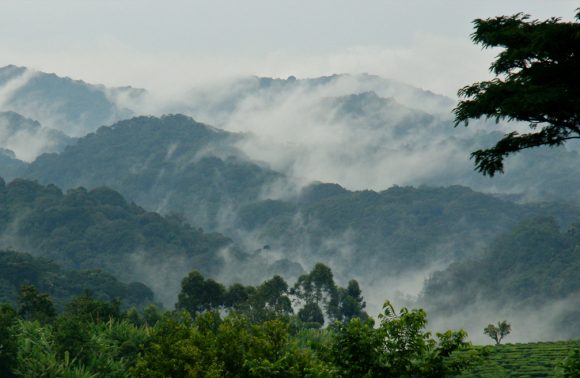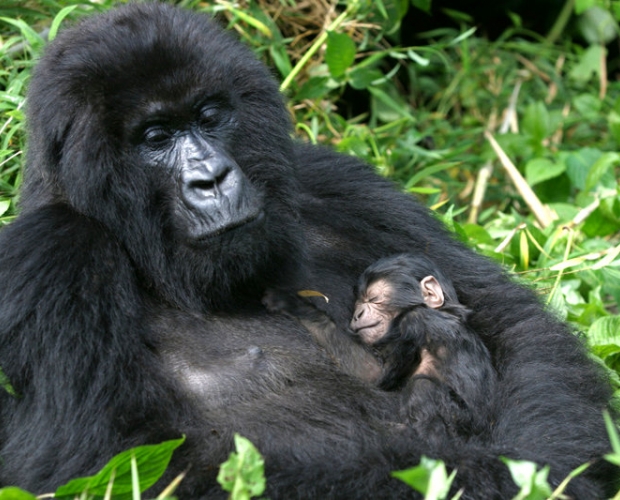RWANDA
Rwanda is, quite simply, the best place in Africa to engage in what is arguably the world’s single most thrilling wildlife encounter: tracking mountain gorillas through the steep bamboo- and forest-swathed slopes of the Virunga Mountains. The country is a fascinating combination of nature, wildlife and history – that must be seen and heard by everyone.
RWANDA
Rwanda is, quite simply, the best place in Africa to engage in what is arguably the world’s single most thrilling wildlife encounter: tracking mountain gorillas through the steep bamboo- and forest-swathed slopes of the Virunga Mountains. No two encounters are ever the same, but whether it’s a 200kg silverback chilling out on the forest trail, a curious mother staring questioningly into your eyes, or a youngster clumsily attempting to climb a liana, coming face to face with these most gentle of giants is invariably an awesome experience.
Mountain gorillas are the raison d’être for most tourist visits to Rwanda. But this small central African country has far more to offer outdoor enthusiasts. Scenically, there is the mountain-ringed inland sea that is Lake Kivu, the perfect volcanic cones of the Virungas rising to 4,000-plus metres above it, and the endless succession of steep cultivated mountains that have led to it being dubbed ‘Land of a Thousand Hills’ and ‘The Switzerland of Africa’.
As for wildlife, the variety is startling. The Virunga Mountains are also home to the delightful golden monkey, while Nyungwe National Park – protecting an astonishing 1,000km2 of near-pristine montane rainforest – supports a full 13 primate species, ranging from a habituated community of chimpanzees to the lovely L’Hoest’s and Rwenzori colobus monkeys. Rwanda’s national checklist of 700-plus bird species, in an area smaller than that of its former coloniser Belgium, includes the 27 super-localised Albertine Rift Endemics protected in Nyungwe, along with such iconic species as shoebill, Ross’s turaco, great blue turaco and papyrus gonolek. And when it comes to more conventional safaris, the Big Five are all now protected – and quite easily seen – in the hilly savannah of what must surely be Africa’s most rapidly resurgent protected area: Akagera National Park.
WHEN TO GO TO RWANDA
Rwanda’s climate consists of four seasons: ‘long rainy season’ (March–May), ‘long dry season’ (June–September), ‘short rainy season’ (October-November), and ‘short dry season’ (December-February). Temperatures don’t vary much throughout the seasons, with warm days and cool nights, particularly at altitude. If your main reason for visiting Rwanda is to track mountain gorillas in the Volcanoes National Park in the north-west of the country, the best time to travel is during the dry period from June to September, although you can track gorillas throughout the year. The rainy seasons from March to May and June to September are the optimum times for tracking chimpanzees.
When is the best time to go Gorilla Tracking: You can track mountain gorillas in the Volcanoes National Park in the northwest of the country at any time of year, although the best time is during the dry seasons from June to September and December to February. April is very wet and is therefore the worst month to track gorillas as the paths in the forest will be very muddy and slippery and the gorillas may try to avoid the rain, taking shelter and hiding under the canopy.
HIGHLIGHTS
Volcanoes National Park
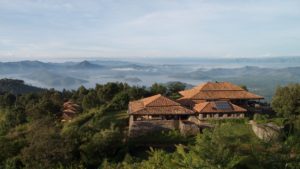 Protecting the Rwandan sector of the Virunga Mountains, the 160km2 Volcanoes National Park is best-known as the place where Dian Fossey launched her pioneering study of mountain gorillas in the wild in 1966, and where the Oscar-nominated film Gorillas in the Mist was shot on location in 1988. It is one of Africa’s most scenic national parks, comprising a chain of six extinct and three active volcanoes whose steep forest-swathed slopes are linked by fertile saddles formed by solidified lava flows. Straddling the border with Uganda and the DR Congo, the Virungas provide sanctuary to more than half the world’s mountain gorillas, and the Rwanda component is home to a dozen habituated groups for which a total of 96 tracking permits are issued daily. Other wildlife includes the nimble bamboo-guzzling golden monkey, elusive populations of elephant and buffalo whose spoor often litters the forest trails, and the likes giant forest hog, bushpig, bushbuck, and black-fronted duiker. Around 200 bird species are thought to inhabit the mountains, a list that includes at least 16 Albertine Rift Endemics. Tracking mountain gorillas is far and away the most popular tourist activity, but it is possible to extend a stay with other activities such as golden monkey tracking, hiking to Dian Fossey’s former camp at Karisoke, and hiking to four of the volcanic peaks.
Protecting the Rwandan sector of the Virunga Mountains, the 160km2 Volcanoes National Park is best-known as the place where Dian Fossey launched her pioneering study of mountain gorillas in the wild in 1966, and where the Oscar-nominated film Gorillas in the Mist was shot on location in 1988. It is one of Africa’s most scenic national parks, comprising a chain of six extinct and three active volcanoes whose steep forest-swathed slopes are linked by fertile saddles formed by solidified lava flows. Straddling the border with Uganda and the DR Congo, the Virungas provide sanctuary to more than half the world’s mountain gorillas, and the Rwanda component is home to a dozen habituated groups for which a total of 96 tracking permits are issued daily. Other wildlife includes the nimble bamboo-guzzling golden monkey, elusive populations of elephant and buffalo whose spoor often litters the forest trails, and the likes giant forest hog, bushpig, bushbuck, and black-fronted duiker. Around 200 bird species are thought to inhabit the mountains, a list that includes at least 16 Albertine Rift Endemics. Tracking mountain gorillas is far and away the most popular tourist activity, but it is possible to extend a stay with other activities such as golden monkey tracking, hiking to Dian Fossey’s former camp at Karisoke, and hiking to four of the volcanic peaks.
Tracking mountain gorillas in the Virungas ranks high on almost every traveller’s bucket list of must-do experiences. And the reality seldom disappoints. Gorillas are more closely related to humans than any animal other than chimpanzees, and the sheer bulk of these charismatic apes – a silverback might weigh 200kg – is deeply impressive. Meanwhile, the very fact that tourists can routinely approach gorillas to within a few metres pays testament to their remarkable peaceable temperament. True, the hike up can be hard work. You’ll be climbing steep slopes, through tangled vegetation, at an altitude of above 2,500m – and it isn’t called rainforest for nothing. But the reward, a magical hour spent in the company of nature’s archetypal gentle giants, is quite simply one of the world’s most exhilarating and emotionally charged wildlife encounters.
Akagera National Park
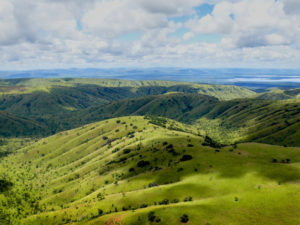
The ideal complement to the primate-oriented wildlife-viewing offered at Volcanoes and Nyungwe National Parks, Akagera is a classic savannah reserve that has undergone an ambitious recent rehabilitation programme to become a fully-fledged Big Five safari destination. As with Rwanda other national parks, the setting is spectacular: a chain of low grassy mountains that slope down to a tract of undulating most savannah hemmed in by an extensive wetland comprising a dozen lakes, extensive papyrus swamps and a labyrinth of channels fed by the meandering Akagera River.
Having suffered heavily from poaching and encroachment since the 1990s, Akagera was placed under the dynamic stewardship of the non-profit African Parks Network in 2010. Since them the boundaries have been fenced, the range of tourist activities has been expanded to include guided walks, boat trips and night drives, and an ongoing programme of reintroductions has resulted in the return of lions and black rhino, meaning that all the Big Five (a lost that also includes buffalo, elephant and leopard) can be seen. Other wildlife is also abundant, and the birdlife is truly fantastic, making Akagera a superb add-on to gorilla tracking in the Virungas.
Akagera offers excellent Big Five game viewing. Buffaloes are plentiful and easily seen, elephants are quite common but more difficult to track down, and leopards are observed with increasing frequency on night drives. Lion and black rhino had both been poached to extinction by 2005 but both have since been reintroduced. Seven lions were flown in from South Africa in 2015, followed by another two in 2017, and more than a dozen cubs have now been born in the park May 2017 saw the arrival of 18 black rhinos, one if which has already given birth to a health calf.
Nyungwe Forest National Park
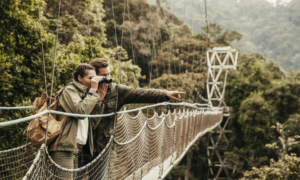
Sprawling magnificently across the elevated ridge that divides Africa’s two largest drainage systems, the Nile and the Congo …
the 1,015km² Nyungwe Forest National Park protects East Africa’s largest tract of montane rainforest in eastern Africa. The park is a remarkably rich centre of biodiversity, with more than 1,050 plant species recorded, among them 200 varieties of orchid, along with 85 mammal, 310 bird, 32 amphibian and 38 reptile species. The main attraction for most visitors is the opportunity to track a habituated group of chimpanzees, bu the park is home to a dozen other primate species, most conspicuously the acrobatic Ruwenzori colobus and striking L’Hoest’s monkey. Nyungwe is also highly alluring to birders, since it supports all but two of the 29 Albertine Rift Endemics that occur on the eastern rift escarpment, along with the dazzling great blue turaco, which is often seen is small flocks flapping clumsily across a road or forest clearing. It is also the site of East Africa’s only suspended canopy walkway.
Kigali
Founded as recently as 1907, Kigali served as a minor administrative centre in the colonial era, and had a population of fewer than …
6,000 when it was selection as capital of newly-independent Rwanda due to its central location in 1962. Today, this strikingly neat and modern-looking highland city sprawls attractively across a series of hills spanning altitudes of 1,300-1,600m, and hosts a population well in excess of one million. Thanks in part to a longstanding nationwide ban on plastic bags, Kigali is widely regarded to be Africa’s cleanest city (in 2008, it became the first African town to be presented with the UN’s annual Habitat Scroll of Honour award). It is also the main port of entry to Rwanda, being the site if th country’s only international airport, and its central location makes it a useful base for exploration further afield.
The profoundly moving Kigali Genocide Memorial stands in Gisozi, the burial site of over 250,000 people killed in a three-month period during Rwanda’s
1994 genocide. The memorial is home to the Genocide Archive of Rwanda, which includes photographs, official documents and geographical data relating to the genocide. 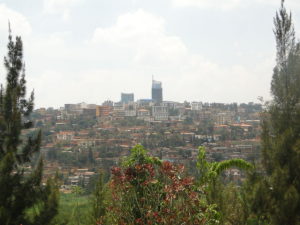 Kandt House Museum is set in Kigali’s oldest building, an unassuming example of colonial architecture built in 1907 for the eponymous explorer and German governor. It opened as Rwanda’s natural history museum in 1907, but following the recent relocation of most of its exhibits to the much larger Museum of the Environment in Karongi, it will focus more on the history of Rwanda and the development of Kigali as capital when eventually it reopens. Until that happens, Kandt House is still worth a visit for the great views over the city. The suburban Nyabugogo Market is Kigali’s busiest shopping area, with stalls and vendors selling offering everything from trendy trainers and shoes and the latest electronic equipment to fresh fruit and vegetables, and oven-warm baguettes. It is a fascinating, vibrant place to explore, but don’t take photos without the subject’s permission. The top birdwatching site in the city limits, the artificial Lake Nyarutarama frequently supports a variety of kingfishers, ducks, pelicans, herons and egrets, along with black crake, African jacana and pied and malachite kingfisher, while the surrounding grassland hosts a selection of widow birds, weavers, waxbills and seedeaters. A more far-flung but rewarding goal for birdwatchers, Nyabarongo Bridge spans the eponymous river as it flows through swampy Bugesera District about 15km south of Kigali. The main attraction here is aquatic and papyrus-associated birds, which range from pelicans and moorhens to localised papyrus-dwellers such as papyrus gonolek, white-winged scrub-warbler, papyrus yellow warbler and papyrus canary.
Kandt House Museum is set in Kigali’s oldest building, an unassuming example of colonial architecture built in 1907 for the eponymous explorer and German governor. It opened as Rwanda’s natural history museum in 1907, but following the recent relocation of most of its exhibits to the much larger Museum of the Environment in Karongi, it will focus more on the history of Rwanda and the development of Kigali as capital when eventually it reopens. Until that happens, Kandt House is still worth a visit for the great views over the city. The suburban Nyabugogo Market is Kigali’s busiest shopping area, with stalls and vendors selling offering everything from trendy trainers and shoes and the latest electronic equipment to fresh fruit and vegetables, and oven-warm baguettes. It is a fascinating, vibrant place to explore, but don’t take photos without the subject’s permission. The top birdwatching site in the city limits, the artificial Lake Nyarutarama frequently supports a variety of kingfishers, ducks, pelicans, herons and egrets, along with black crake, African jacana and pied and malachite kingfisher, while the surrounding grassland hosts a selection of widow birds, weavers, waxbills and seedeaters. A more far-flung but rewarding goal for birdwatchers, Nyabarongo Bridge spans the eponymous river as it flows through swampy Bugesera District about 15km south of Kigali. The main attraction here is aquatic and papyrus-associated birds, which range from pelicans and moorhens to localised papyrus-dwellers such as papyrus gonolek, white-winged scrub-warbler, papyrus yellow warbler and papyrus canary.
Kwita Izina
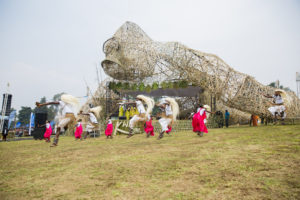 Rwanda’s Kwita Izina is a yearly recurring event started in 2005 where all the gorillas who have been born that year, are named. Naming a newly born baby has been part of Rwandan culture and tradition for centuries. Names attributed to the gorillas play a significant role in the on-going programme of monitoring each individual gorilla in their families and habitat. Kwita Izina, a uniquely Rwandan event, was introduced in 2005 with the aim of creating awareness of conservation efforts for the endangered mountain gorilla.
Rwanda’s Kwita Izina is a yearly recurring event started in 2005 where all the gorillas who have been born that year, are named. Naming a newly born baby has been part of Rwandan culture and tradition for centuries. Names attributed to the gorillas play a significant role in the on-going programme of monitoring each individual gorilla in their families and habitat. Kwita Izina, a uniquely Rwandan event, was introduced in 2005 with the aim of creating awareness of conservation efforts for the endangered mountain gorilla.
For three decades prior to the first official gorilla naming ceremony, the naming of baby gorillas was carried out by rangers and researchers that closely monitor these unique animals on a daily basis.
Kwita Izina has been attended by thousands of international, regional and local participants over the recent years. The Government of Rwanda and conservation partners have donated substantial resources to gorilla conservation and continue to do so. Each year new born gorilla babies are celebrated in an exciting event at the foothills of the Virunga Mountains.
Our favorite places in RWANDA
WATCH THE VIDEO
WHAT ARE YOU WAITING FOR?
Contact us if you’re ready to book your safari or to get additional information.

